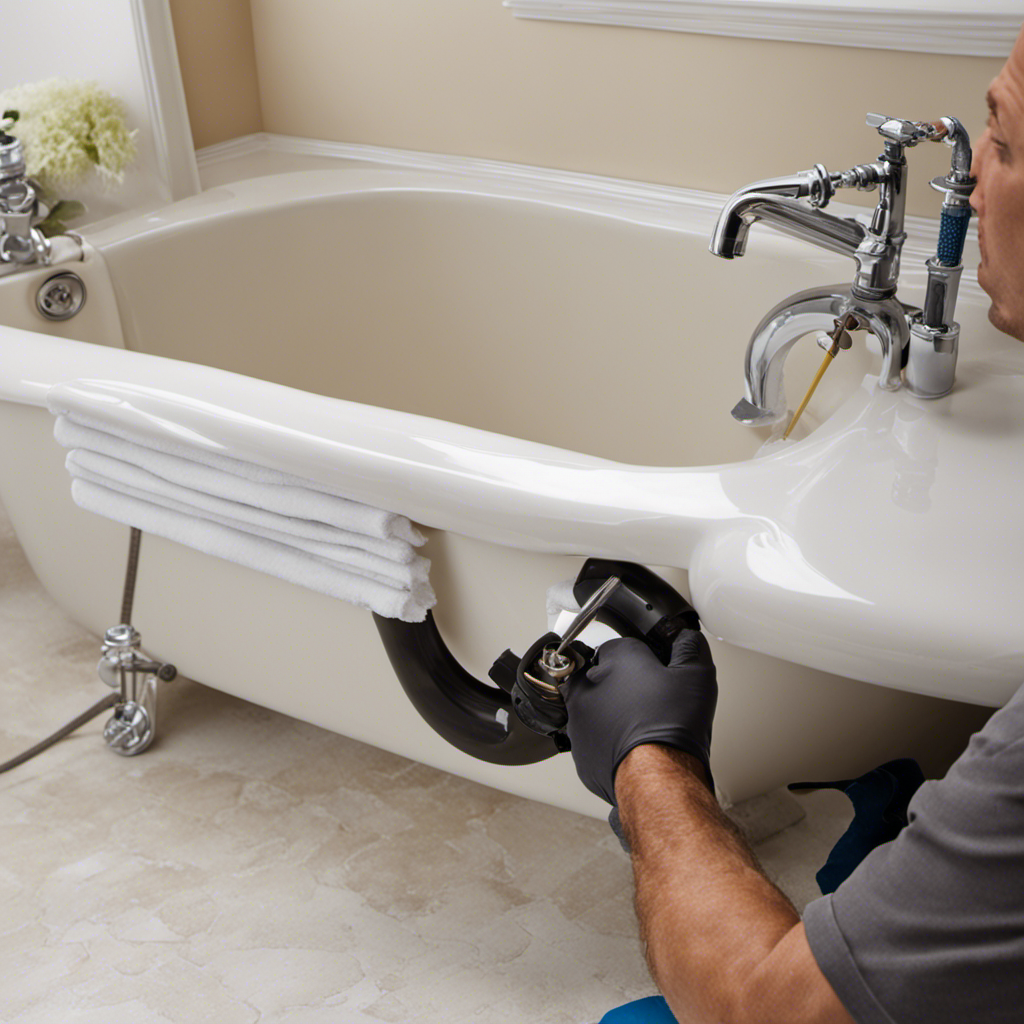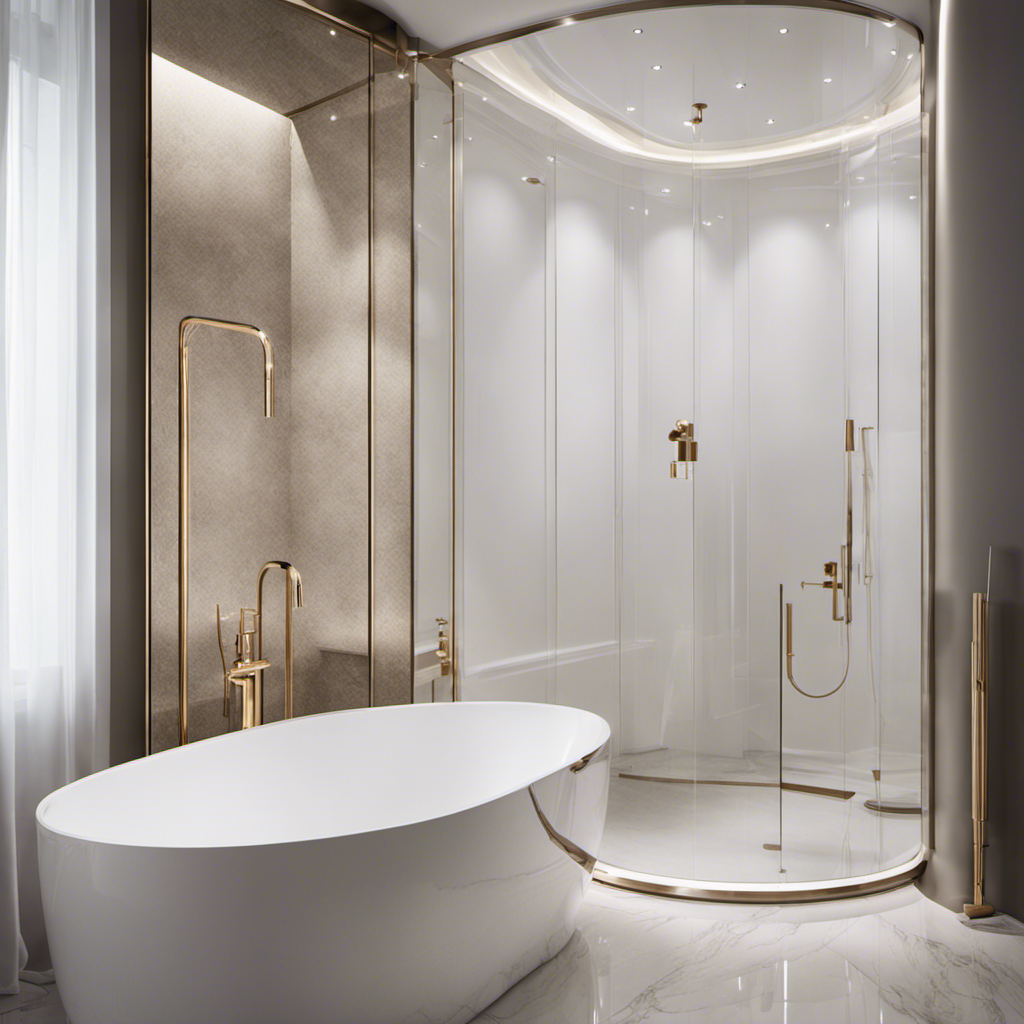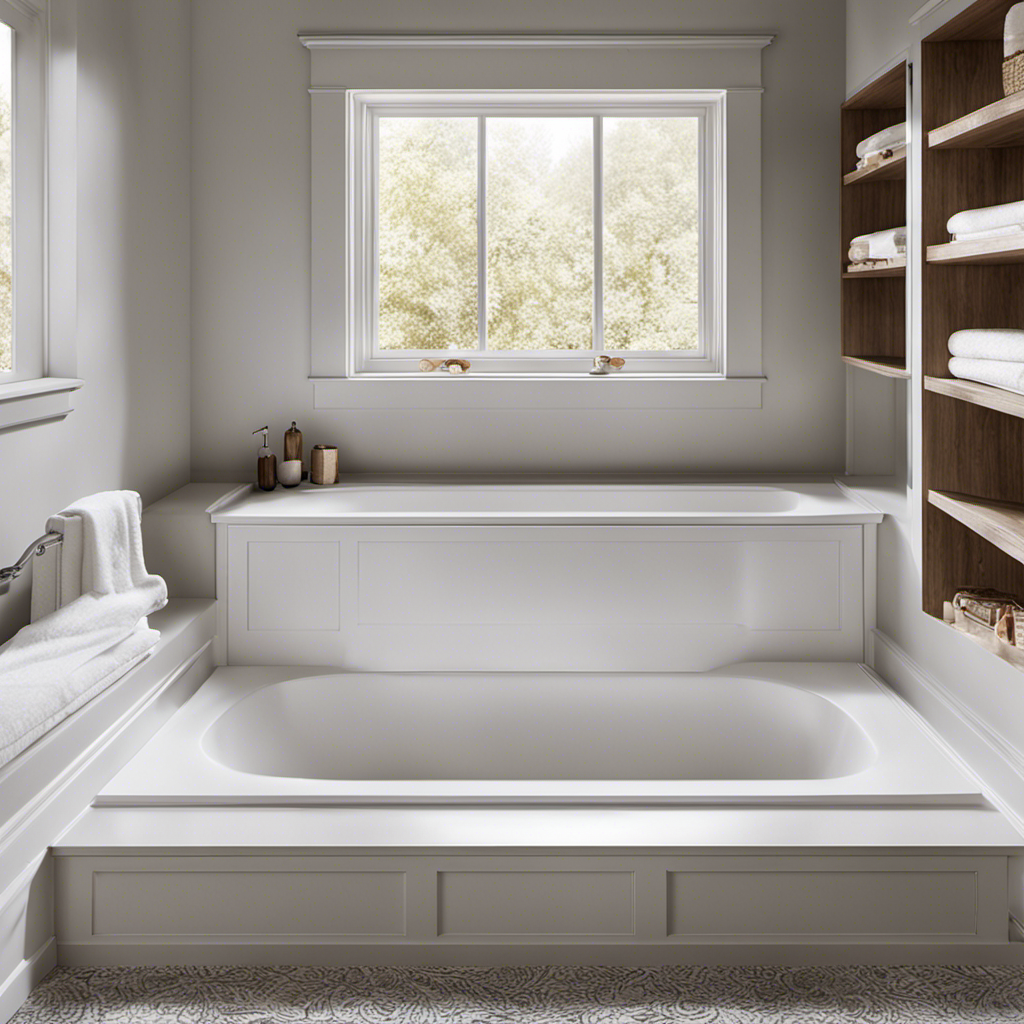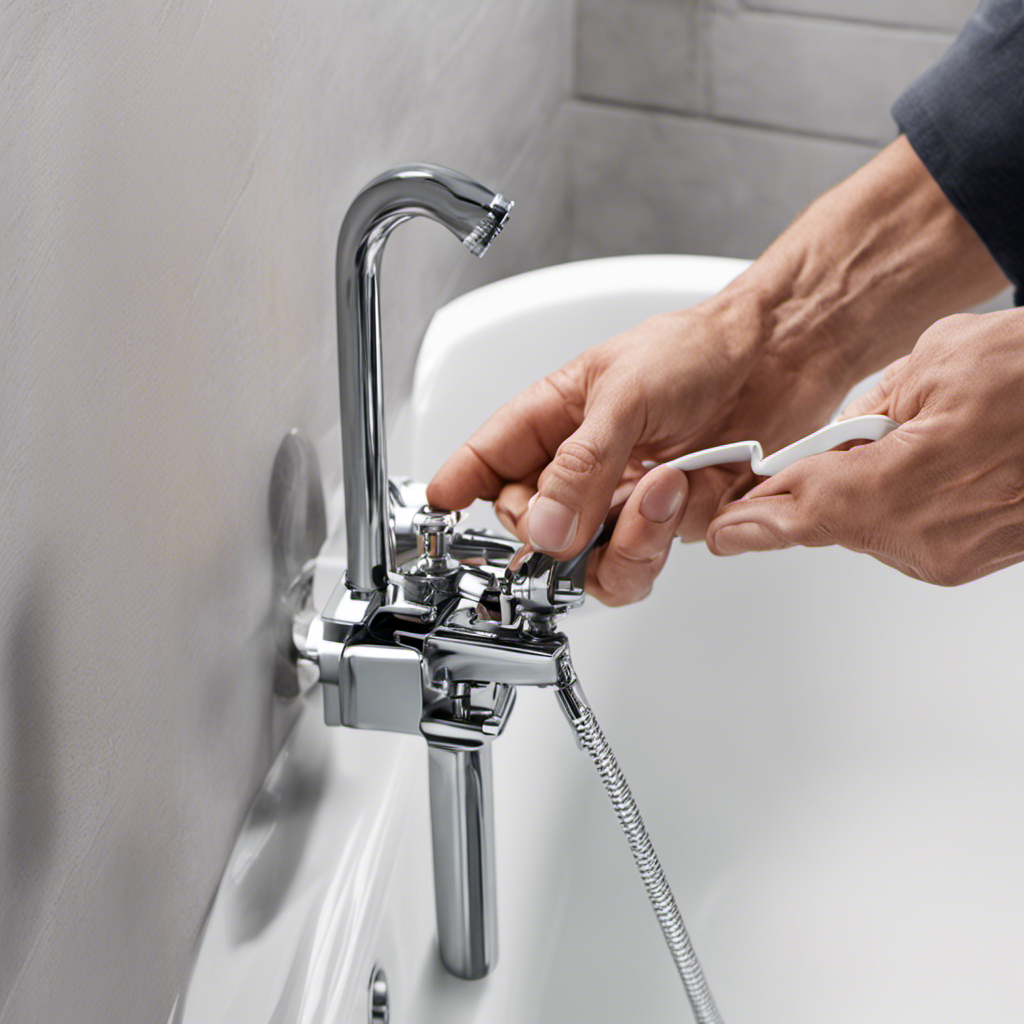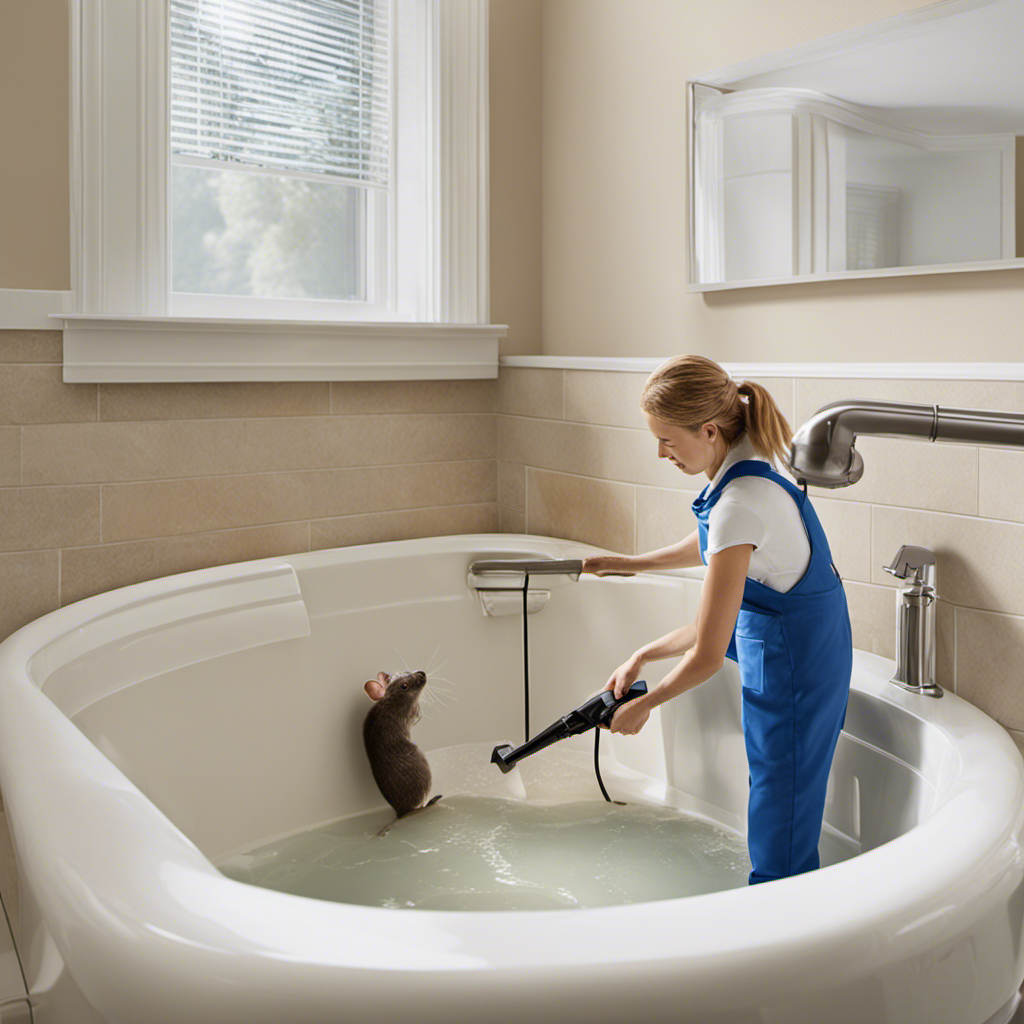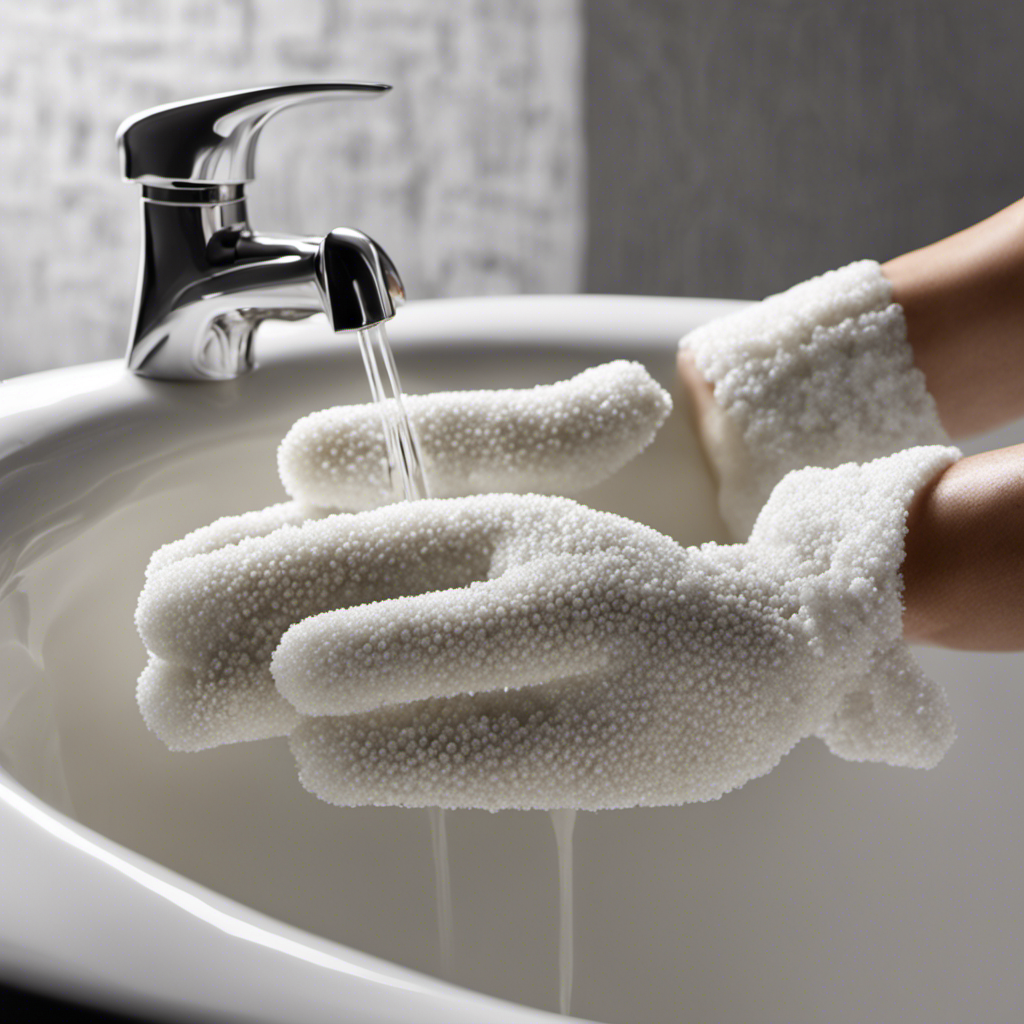As a seasoned plumber, I’ve encountered my fair share of clogged and faulty bathtub drain pipes. Today, I’m here to share my expertise on how to replace that troublesome pipe and restore the smooth flow of water in your tub.
In this step-by-step guide, I’ll walk you through the process of removing the old drain pipe, choosing the right replacement, and ensuring a leak-free connection.
So grab your tools and let’s dive into this detailed journey of bathtub drain pipe replacement.
Key Takeaways
- Turn off the water supply and remove excess water before removing the old drain pipe.
- Consider the material and size of the replacement pipe, such as PVC or brass, and be aware of their pros and cons.
- Ensure proper sealing of connections and check for leaks to prevent future issues.
- Use essential tools such as a pipe wrench, adjustable pliers, hacksaw, and materials like PVC cement and silicone sealant for the replacement process.
Step-by-Step Guide to Removing the Old Drain Pipe
Now let’s go through the step-by-step process of removing the old drain pipe.
When dealing with a rusted drain pipe, it’s important to take extra precautions to ensure a successful replacement.
The first thing to do is to turn off the water supply and remove any excess water from the bathtub.
Next, use a wrench or pliers to loosen the nuts connecting the drain pipe to the bathtub. Be careful not to force the pipe as it may cause further damage. If the pipe is heavily rusted, applying a penetrating oil can help loosen it.
Once the nuts are removed, gently pull out the old drain pipe, being mindful of any attached parts.
Common mistakes during drain pipe replacement include using excessive force, not properly supporting the pipe during removal, and not checking for any additional leaks or damage.
Choosing the Right Replacement Pipe for Your Bathtub
When choosing the correct replacement, it’s important to consider the material and size of the pipe for your bathtub. The material you choose will have a significant impact on the overall durability and performance of your drain.
Here are some pros and cons of different bathtub drain materials:
-
PVC:
-
Pros: affordable, easy to install, resistant to corrosion
-
Cons: can crack under extreme temperatures, may not be as durable as other materials
-
Brass:
-
Pros: highly durable, resistant to rust and corrosion, offers a sleek appearance
-
Cons: more expensive than other materials, requires professional installation
When replacing a bathtub drain pipe, there are some common mistakes you should avoid:
- Using the wrong pipe size or material
- Not properly sealing the connections
- Failing to check for leaks after installation
Tools and Materials Needed for the Drain Pipe Replacement
To successfully replace the drain pipe in your bathtub, you’ll need a few tools and materials. Here is a list of everything you’ll need:
| Tools | Materials | Troubleshooting Common Issues |
|---|---|---|
| Pipe wrench | New drain pipe | Leaks |
| Adjustable pliers | PVC cement | Clogs |
| Hacksaw | Plumber’s tape | Rust or corrosion |
| Screwdriver | Silicone sealant | Damaged threads |
| Bucket | Pipe fittings | Improper installation |
The pipe wrench and adjustable pliers are essential for removing the old drain pipe and tightening the new one. The hacksaw will come in handy if you need to cut any pipes to the correct length. A screwdriver may be needed to remove any screws holding the drain assembly in place. Don’t forget to have a bucket nearby to catch any water that may leak during the replacement process. Additionally, PVC cement, plumber’s tape, silicone sealant, and pipe fittings will help ensure a secure and watertight connection. Troubleshooting common issues such as leaks, clogs, rust, corrosion, and damaged threads may require additional tools and materials depending on the specific problem you encounter.
Removing the Old Drain Pipe and Prepping for Installation
The essential tools for this step include a pipe wrench and adjustable pliers. These tools will help me successfully remove the old drain pipe and prepare for the installation of a new one.
As I begin this process, I can’t help but feel a mix of excitement and nervousness. Excitement because replacing bathroom fixtures gives me a sense of accomplishment, and nervousness because I know there might be some common drain pipe issues that I need to troubleshoot along the way.
In order to make this task easier, I will follow these steps:
- Turn off the water supply to the bathtub to avoid any leaks or water damage during the process.
- Use the pipe wrench to loosen and remove the old drain pipe from the bathtub drain assembly.
- Carefully inspect the area for any signs of damage or blockage that may have caused the previous issues.
- Clean the area and prepare it for the installation of the new drain pipe.
Installing the New Drain Pipe and Ensuring a Leak-Free Connection
Now that you have removed the old drain pipe and prepped the area, it’s time to install the new one and make sure the connection is leak-free.
When replacing a bathtub drain pipe, there are some common mistakes to avoid. Firstly, ensure that all the connections are properly tightened using the appropriate tools. Check for any gaps or loose fittings, as these can lead to leaks.
Additionally, make sure to use the correct type of pipe and fittings for your specific bathtub model. Using the wrong materials can result in poor connections and potential leaks.
Once the new drain pipe is installed, it’s important to thoroughly test for any leaks. To troubleshoot leaks, carefully inspect all the joints and connections for any signs of water seepage. If you notice any leaks, tighten the fittings or replace any faulty parts.
Conclusion
In conclusion, replacing a bathtub drain pipe can be a challenging task, but with the right tools and materials, it can be accomplished smoothly. By following the step-by-step guide, you can remove the old drain pipe and install a new one, ensuring a leak-free connection.
Remember, a well-functioning drain pipe is essential for maintaining a functional and efficient bathtub. So, don’t hesitate to tackle this project and enjoy the satisfaction of a job well done.
As they say, ‘A leak-free drain pipe is the key to a smooth-flowing bathtub.’
